
|
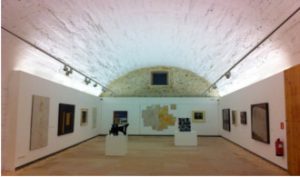 Eivissa Contemporary Art Museum (MACE): Located in the heart of the old town in a series of vaulted rooms, the museum houses a collection of paintings and engravings made by local and international artists since the 1960’s to the present day. Eivissa Contemporary Art Museum (MACE) was opened in 1969 and has become one of the oldest contemporary art museums in Spain. Now in two parts the building has been sympathetically renovated to include the old building designed by Simon Poulet, making use of Old Town architecture, and the new building designed by Victor Beltran Roca, which optimises the space available without adding to the already busy urban landscape around. |
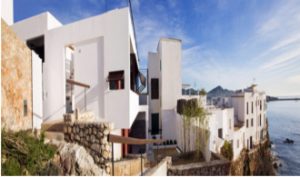 The Museum Casa Broner was built in 1960 as a home and studio of German architect and painter Erwin Broner (1898-1971). Declared of Cultural Interest in 2000, is a key piece of modern architecture in the Balearic Islands. After careful restoration -conducted by the study of the architects Isabel Feliu and Raymond Ollé- opened to the public in order to raise awareness on the important legacy of Erwin Broner as artist and architect, and promote research, documentation, preservation and dissemination of modern and contemporary architecture, as well as rural architecture, landscape architecture and the territory in Ibiza and the Balearic Islands. |
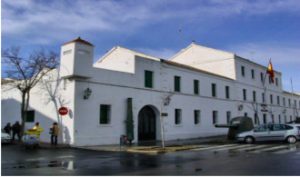 Menorca´s Military Museum, was opened in 1981, the same year as the bi-centenary of the conquest of Minorca by Spanish troops. The museum´s first home was in one of the powder magazines in the castle of San Felipe. Museo Militar Some years later the museum was transferred to the 18th century barracks of Cala Corp in the main square of Es Castell. Built by the British in 1771, during their second occupation of Menorca, it was called Georgetown after King George III. The barracks were home to the Military Hospital, Menorca´s Coastal Regiment... |
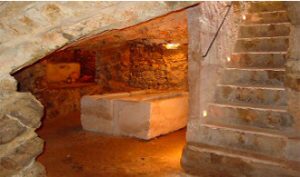 Puig des Molins, a part of the Archaeological Museum of Ibiza and Fromentera, is home to more than 3,000 tombs from the Phoenician-Punic times. Considered the world’s finest collection of Punic remains, Puig des Molins is the island’s first cemetery and dates back to the late 7th century. Here, small caves have been found containing sarcophagi and more. The graves have been found to contain baked mud figures, jewelry, coins and more. To explore this area, follow the path which winds guests into the burial caverns in the hill. |
 The Museum House of Jose Torrent is located in the old centre of Ciutadella, dedicated to the local painter José Torrent (Ciutadella 1904-1990). It displays around one hundred works, which are most representative of his different periods, as well as personal objects. There is also some information about his life. His painting developed from the impressionism of his early years to the expressionism of his later life. His very personal view of the landscape of Menorca and his use of colour has led to him being known as the “Menorcan Van Gogh”. |
 The Museum of Menorca is the most important on the island. It is housed in the old Franciscan convent of Jesús in Maó, a Baroque building from the end of the XVII century. The heritage housed here invites us in to travel in time through Menorca’s history through materials from old collections and archaeological digs as well as gifts and loans from both private individuals and from public entities. The exhibits are shown on three floors: the ground floor which encircles the cloister of the old convent, housing temporary exhibitions and the conference hall; the first floor housing material from the ancient history of the island from the very first inhabitants to Roman and Byzantine times. |
 Dalt Vila: You’re better off on foot, in sensible shoes, exploring the narrow, winding, steep cobbled streets and magnificent views from the breaks in the high ramparts and the vast terraces at each level (Dalt Vila actually means ‘Upper Town’). The dramatic main entrance is up a slope, crossing a drawbridge through the Portal de Ses Taules, flanked by mighty statues in roman stone, entering into an ancient cobbled stone courtyard, giving immediately on to the Plaza de Vila or main square. The other entrance, Portal Nou (reached from behind the Plaza del Parque) has a more gradual ascent. Take your time as there’s so much fascinating detail. |
 The Archaeological Museum of Ibiza and Formentera has two locations, one in Dalt Vila, the old town, and the other in Puig des Molins. The Archaeological Museum is the institution that preserves, exhibits historical remains of the past of Ibiza and Formentera. These islands were named Islands Pitiuse classics, differentiating them from the rest of the Balearic Islands (Mallorca and Menorca). This museum is located in the Cathedral Square. The belvedere dominates the view of the lower town (La Marina and port) and, of course, the church of Santa Maria, consecrated as a cathedral in 1785. This museum was created in 1907. |
 Bellver Castle is a Gothic style castle on a hill 3 km to the west of the center of Palma on the Island of Majorca, Balearic Islands, Spain. It was built in the 14th century for King James II of Majorca. |
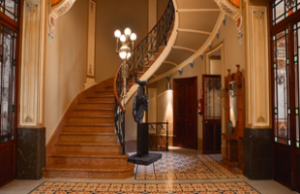 Can Prunera is a modern museum in an art nouveau mansion offering guided tours of permanent & temporary exhibits. Address: Carrer de sa Lluna, 86-90, 07100 Sóller, Illes Balears, Spain |
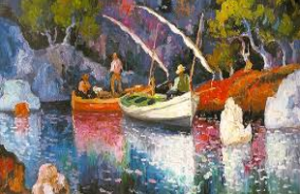 Museo Dionis Bennassar Paintings by the eponymous 20th-century Mallorcan artist displayed in his restored former home. Address: Carrer de la Roca, 14, 07460 Pollença, Illes Balears, Spain |
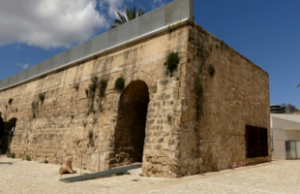 Museum of Contemporary Art Restored, historic building with contemporary art & a glass floor over an archeological site. Address: Ronda Narcis Putget, 07800 Ciudad de Ibiza, Spain |
 Museu Fundación Juan March, Palma is a museum in a grand 17th-century building showcasing works from 20th-century Spanish artists. Address: Carrer de Sant Miquel, 11, 07002 Palma, Illes Balears, Spain |











